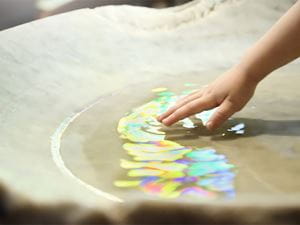
Holy water is largely used in Roman Catholic, Lutheran, Anglican, Eastern Orthodox, and Oriental Orthodox communities, though other churches have been known to make and use holy water as well. In some denominations, water from specific locations is especially considered holy. For example, some Christians consider water from the Jordan River in Israel to be especially holy because of its associations with the story of Jesus Christ. Others may believe that a well or lake where a miracle occurred has blessed waters. Lourdes is such a place. This, however, is not the primary understanding for most denominations that use holy water. For Roman Catholics, Lutherans, Anglicans, and Orthodox Christians, water is considered holy after it has been sanctified by a priest.
Christians whose tradition includes holy water believe that water, one of the key elements of our creation, bears a special importance for spiritual life. The prayer of sanctification over the baptismal waters includes reference to the “dawn of creation” and the Spirit who breathed on the waters (Genesis 1.1-3); to the crossing of the Red Sea as an image of baptism (Exodus 14); the crossing of the Jordan River into the Promised Land (Joshua 3); and the baptism of John for repentance (Matthew 3.11). Most importantly, the Gospels, in describing the last moments of Jesus’s crucifixion when he had been pierced by the soldier’s spear, speak of the blood and water that flowed from his side (John 19.34). Here the water takes on a baptismal sense.
In the Roman Catholic tradition, the sanctification of holy water involves two elements—water and salt—and a series of prayers. The prayers include a blessing and an exorcism over both elements. The exorcisms are prayers asking God to set these elements free from evil powers or influences. The blessings invoke the power of the Holy Spirit to imbue the holy water with God’s protection and favor. Then the salt is added to the water in the shape of a cross before being mixed together.
Once the water has been sanctified and is considered holy water, it has a variety of uses. In Catholic churches, a small font filled with holy water may be placed by the entrance. As they come in, worshipers may dip their fingers in the water and make the sign of the cross. This is both a gesture of purifying preparation for worship and a reminder of baptism. Holy water is also used to invoke God’s protection from evil. It may be distributed in small bottles to parishioners who take it home for use in blessings in the household.
Once holy water has been created, it is to be stored and disposed of in special ways. Holy water is often used during church services as part of sprinkling rites and acts of penance. If holy water has been used to purify something and then the remainder needs to be disposed of, it is poured down a special drain separate from the rest of the church’s water system, a drain that leads directly into the ground. It is considered inappropriate for it to be processed like normal water instead of returned directly to the earth.
Read more about Christianity’s history of religious rites here.
3/23/2021 6:32:39 PM









